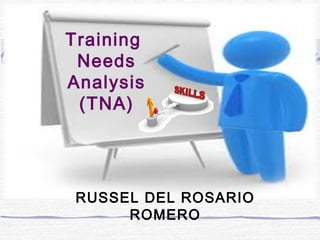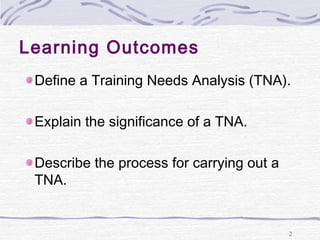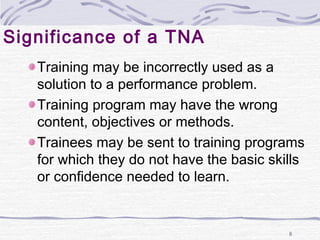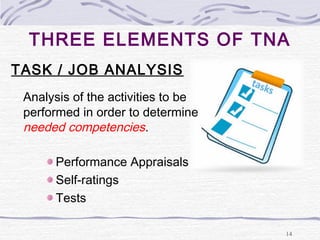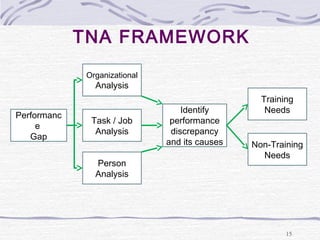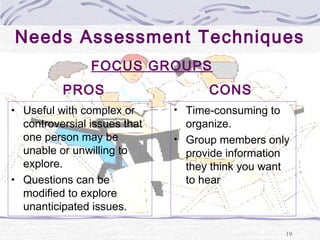This document outlines the process for conducting a training needs analysis (TNA). It defines a TNA as a method to determine if a training need exists and, if so, what training is required to address any gaps. The key steps in a TNA include analyzing the organization, tasks, and individuals to identify performance gaps and their causes, which may indicate training needs or non-training issues. Data collection techniques like questionnaires, interviews, documentation review and observations are described. The overall goal of a TNA is to accurately assess training requirements and link them to organizational objectives.
